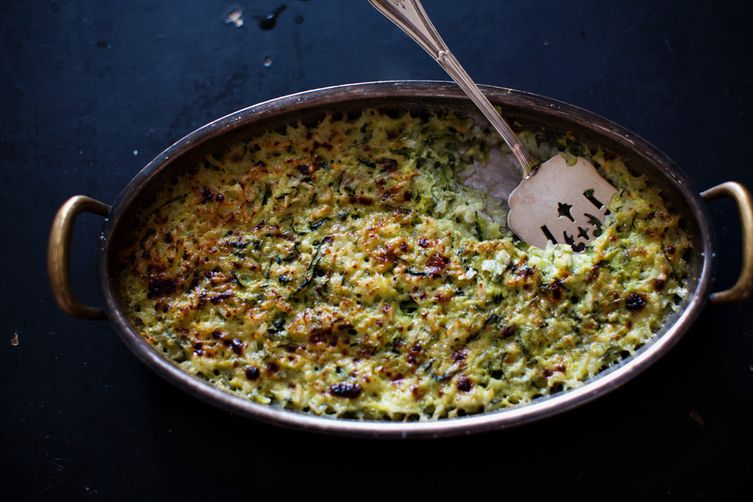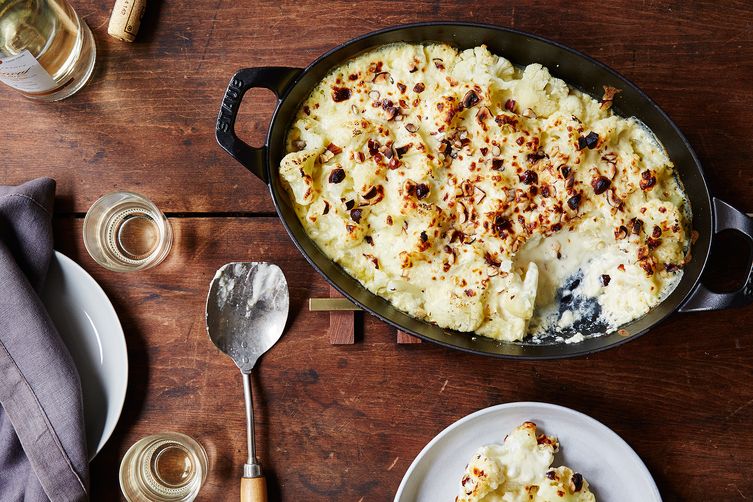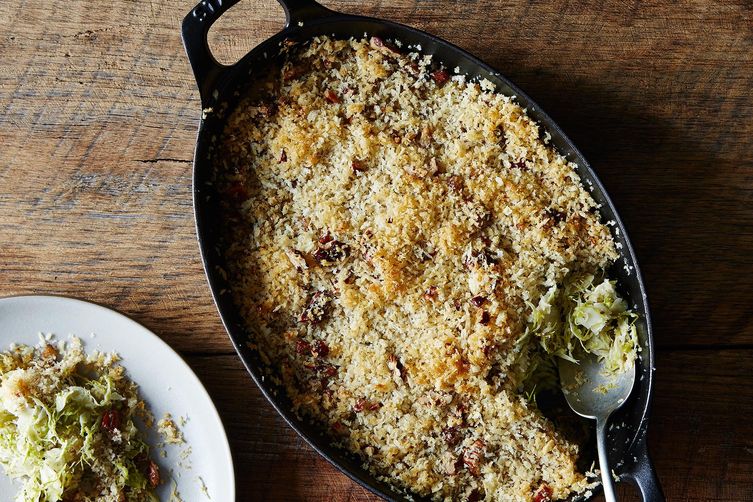
A New Way to Dinner, co-authored by Food52's founders Amanda Hesser and Merrill Stubbs, is an indispensable playbook for stress-free meal-planning (hint: cook foundational dishes on the weekend and mix and match ‘em through the week).
Order nowPopular on Food52
Continue After Advertisement
2 Comments
702551
September 23, 2015
Actually dessert gratins litter French cookbooks. As Donna mentioned, they are typically some sort of fruit covered with sabayon.
The old-school way was to hold a hot metal plate above the item to brown it. The typical commercial restaurant will use a salamander, a gas powered broiler. You can use a propane kitchen torch, but typically they aren't powerful enough or terribly efficient in heating up the contents of the dish.
For savory dishes, there are two basic ways of making gratin.
The first one is to cook something (often raw) in cream/milk for a long them and the long baking time helps form the golden crust. Gratin dauphinoise is the classic example of this. You don't actually need cheese nor breadcrumbs for gratin dauphinoise; it will brown on its own.
The other way is to cover parcooked or fully cooked items with a premade cream/milk based sauce, basically cooking the primary ingredients and the dairy-based sauce separately, then combining for the final gratin browning. The classic French sauce used for this is sauce béchamel. This works better for situations when the sauce and primary ingredients have different cooking times (like a cauliflower gratin). One classic made this way is lobster thermidor. Cooking the lobster with a cream/milk-based sauce would overcook the lobster and erase much of the fresh lobster qualities. Hence, the lobster is cooked separately, slathered with the white sauce, then broiled quickly. This avoids overcooking the lobster while having the nice golden crust.
The fruit gratin is basically the latter method: having a ready-to-eat primary ingredient covered with a finished sauce (sabayon), then broiling quickly to obtain the golden crust. In a restaurant salamander or broiler, this probably takes less than 2 minutes.
The old-school way was to hold a hot metal plate above the item to brown it. The typical commercial restaurant will use a salamander, a gas powered broiler. You can use a propane kitchen torch, but typically they aren't powerful enough or terribly efficient in heating up the contents of the dish.
For savory dishes, there are two basic ways of making gratin.
The first one is to cook something (often raw) in cream/milk for a long them and the long baking time helps form the golden crust. Gratin dauphinoise is the classic example of this. You don't actually need cheese nor breadcrumbs for gratin dauphinoise; it will brown on its own.
The other way is to cover parcooked or fully cooked items with a premade cream/milk based sauce, basically cooking the primary ingredients and the dairy-based sauce separately, then combining for the final gratin browning. The classic French sauce used for this is sauce béchamel. This works better for situations when the sauce and primary ingredients have different cooking times (like a cauliflower gratin). One classic made this way is lobster thermidor. Cooking the lobster with a cream/milk-based sauce would overcook the lobster and erase much of the fresh lobster qualities. Hence, the lobster is cooked separately, slathered with the white sauce, then broiled quickly. This avoids overcooking the lobster while having the nice golden crust.
The fruit gratin is basically the latter method: having a ready-to-eat primary ingredient covered with a finished sauce (sabayon), then broiling quickly to obtain the golden crust. In a restaurant salamander or broiler, this probably takes less than 2 minutes.
Donna
September 23, 2015
Fruit, typically berries, topped with sabayon (preferably flavored with a good liqueur) and touched with a kitchen torch. Magical...





See what other Food52 readers are saying.